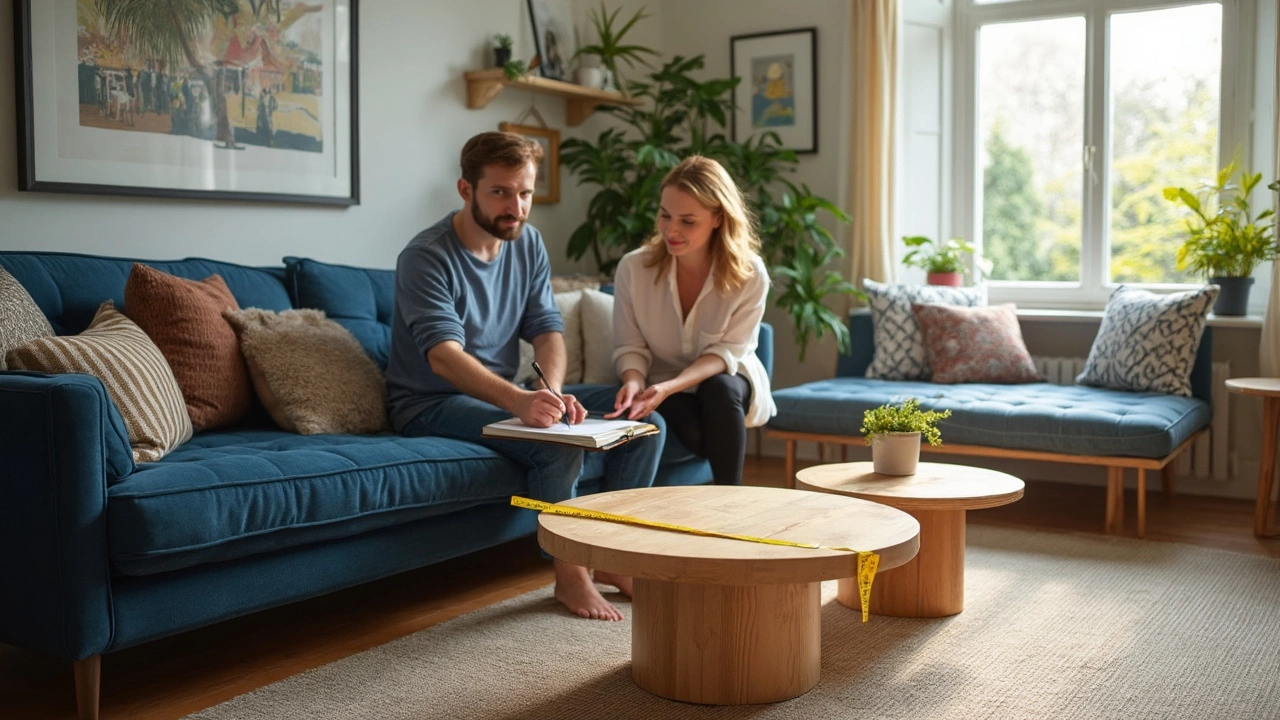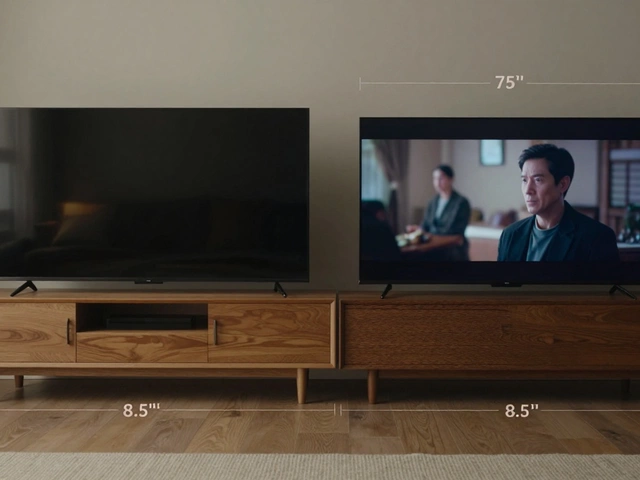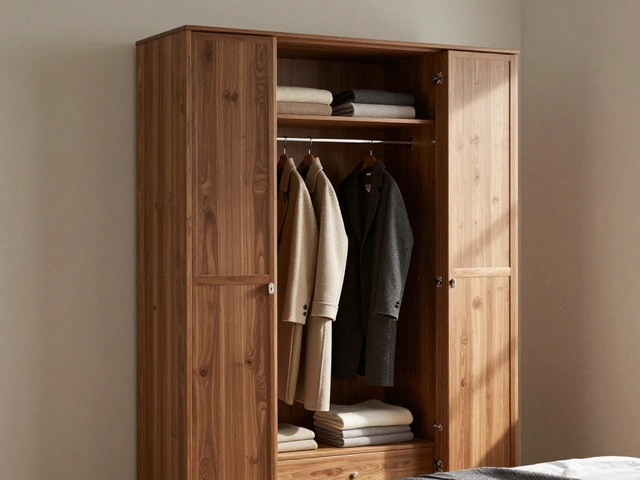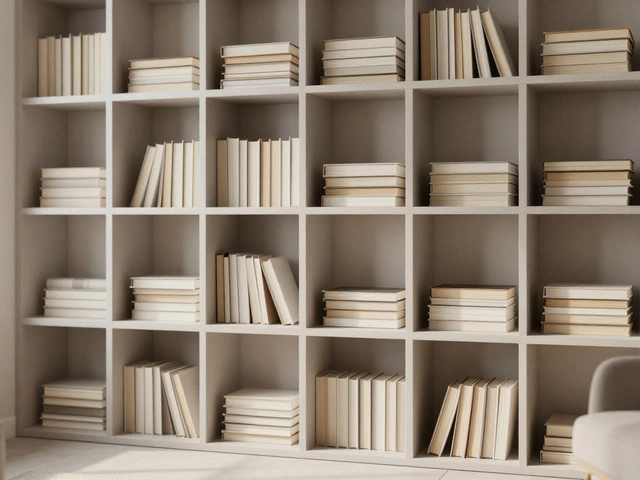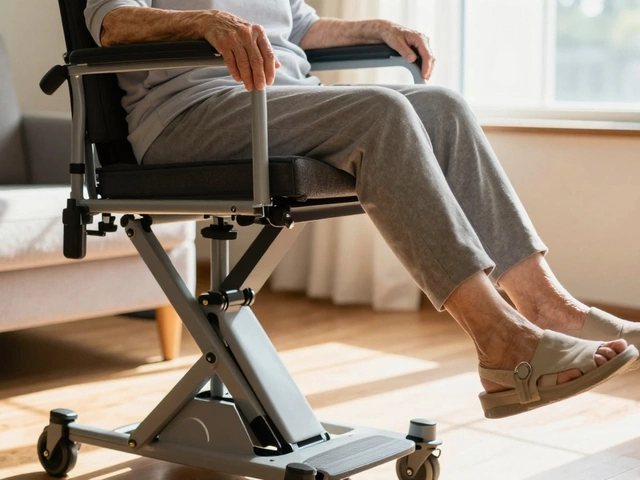Ever set your drink down and realize you’re stretching like a yoga master just to reach the coffee table? Happens to lots of folks, and it usually means the table isn’t sized right for the couch. The trick isn’t just finding a table you like—it’s about the fit. Getting the size wrong can make your living room look crowded or bare, and honestly, it just makes everything less comfy.
The ideal coffee table is usually about two-thirds the length of your couch. No weird math, just a tape measure and a little common sense. This keeps things looking balanced—no giant block in front of your seat or a dinky little table floating in space. Plus, it gives everyone a spot to drop their phone, coffee mug, or whatever snack is on deck.
- Why Coffee Table Size Even Matters
- The Golden Rule: Coffee Table vs Couch Length
- Getting the Height Just Right
- Width, Clearance, and Walkways
- Best Shapes for Different Sofa Styles
- Sizing Mistakes (and How to Avoid Them)
Why Coffee Table Size Even Matters
Most people think a coffee table is just somewhere to put your feet up or plop your remote, but actually, the right size makes a huge difference in your living room. When the coffee table size matches your sofa and space, the whole area feels put together—like someone knew what they were doing. If it’s too big, you'll bump your shins every time you walk by. Too small and there’s nowhere to put snacks during movie night or to work on your laptop.
Designers swear by the proportions because they affect not just looks, but how you move in your room. In fact, a survey done by a popular furniture retailer (think West Elm or CB2) found that over 60% of people regretted their first coffee table purchase—mainly because of bad sizing!
Here's where the right method pays off:
- Better movement flow because you’re not dodging furniture or stretching awkwardly.
- Stuff is always in easy reach, so you use your table more often.
- Balanced look—no weird gaps or crowded feeling between couch and table.
Want to get it right? Start by measuring your couch and the space around it. This helps you figure out the sweet spot for length, width, and even the perfect height. Trust me, getting those numbers right can turn your living room from chaos to cozy in one shot.
| Common Coffee Table Mistakes | Impact |
|---|---|
| Table too long | Makes the room feel cramped |
| Table too wide | Impossible to walk around comfortably |
| Table too short | Annoying to reach, looks out of place |
The Golden Rule: Coffee Table vs Couch Length
If you remember one thing from this whole article, let it be this: your coffee table size should be about two-thirds (or 66%) the length of your couch. This is the groove most living rooms hit when stuff doesn’t feel too crowded, but also doesn’t look like you forgot the table on purpose. For example, if your sofa is 90 inches long, your ideal coffee table should be roughly 60 inches long. Anything much shorter can look lost, and anything much longer crowds people’s legs.
This rule works for almost every couch style—straight sofas, sectionals, loveseats, you name it. If you have a sectional with a really long side, stick to sizing your coffee table off the main seating span, not the full L-shape. People should be able to sit and use it, not just look at it sitting out of reach.
| Couch Length | Recommended Coffee Table Length |
|---|---|
| 72 inches | 48 inches |
| 84 inches | 56 inches |
| 96 inches | 64 inches |
Another trick: line the coffee table up with the outer lines of the couch cushions, not the arms. It keeps the look clean and makes it easy to squeeze past when friends plop down next to you. This is what people mean when they talk about "proportion"—it’s about everything feeling like it just fits.
Always grab your tape measure before you buy. Even showrooms and online listings can play mind games with scale. Measuring out the right coffee table dimensions in your own living room takes out all the guesswork. You’ll be way happier in the end.
Getting the Height Just Right
If there’s one rule that makes or breaks how a coffee table feels with your couch, it’s the height. Get this wrong, and you’ll either have to hunch over or weirdly reach up every time you want to grab something.
The sweet spot? Aim for your coffee table to be about the same height as your couch cushions—or an inch or two lower, max. Most couch seats average 17 to 19 inches off the ground, so a table in that 16 to 18 inch range hits the mark for most homes. If your sofa is super low or high, take a minute to actually measure from floor to seat.
Why does this matter? The right height keeps everything easy to reach, makes the living room layout more usable, and just looks better. A table that’s higher than your couch cushions pretty much always looks awkward. One that’s way lower isn’t great either—it can make you feel like you’re at a kids’ table.
Quick tip: For a sectional or deep couch, go with a table on the slightly lower end. For vintage or modern settees that sit up taller, you can get away with a little more height. But for most people, stick to the "same height or a little under" trick, and you’ll be golden.
| Couch Cushion Height (inches) | Best Coffee Table Height (inches) |
|---|---|
| 16 | 15–16 |
| 17 | 16–17 |
| 18 | 17–18 |
| 19 | 18–19 |
If you’re shopping online, check table dimensions twice—product photos can be misleading. And if you already own the couch, don’t trust your eyes—grab a tape and jot down that cushion height before you even look at tables.
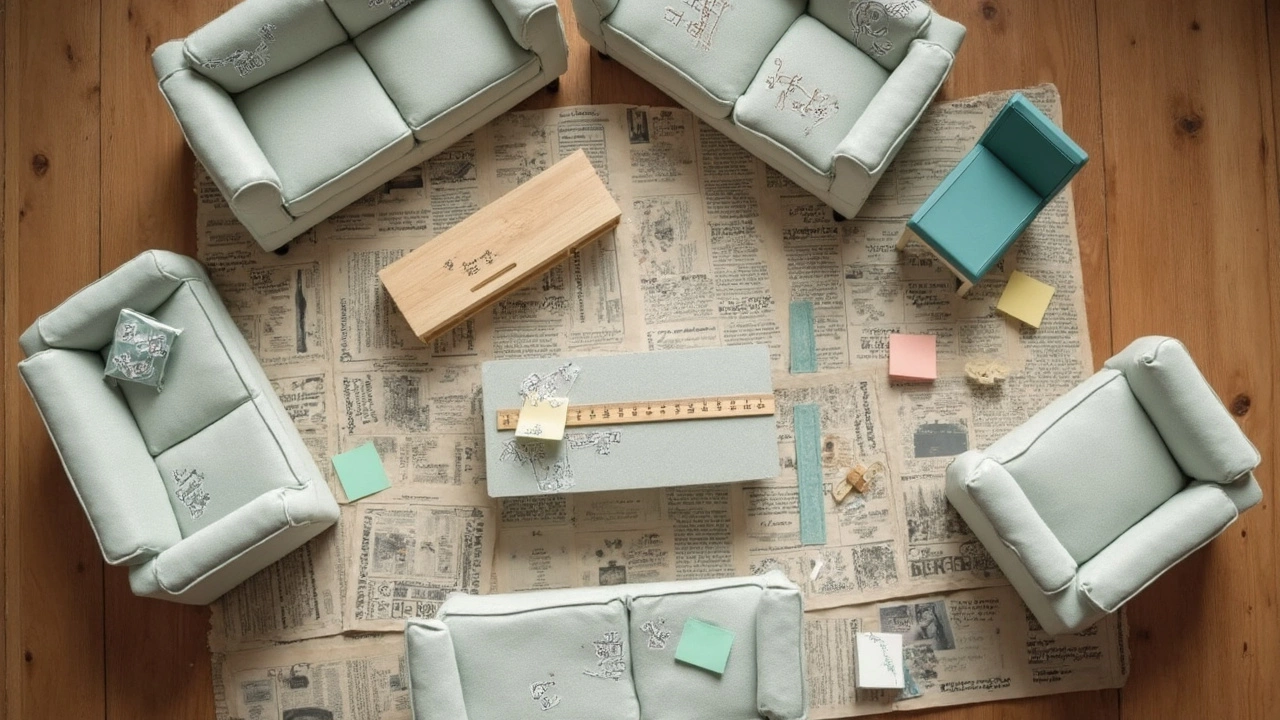
Width, Clearance, and Walkways
Alright, once you’ve nailed the length, you’ve still got to think about the coffee table width and the space it leaves for people to move around comfortably. Nobody wants a setup where you have to suck in your gut to squeeze past the table every time you get off the couch.
The sweet spot is leaving about 16–18 inches between your coffee table and the edge of your couch. This gives you enough room to stretch your legs, hop up, or slide by without banging your knees. For the other sides—like the gap between the table and your TV stand—aim for 24–30 inches. This keeps walkways open so everyone can move around without any awkward shuffling.
- Couch to coffee table: 16–18 inches is your magic number.
- Coffee table to media console or walls: Leave 24–30 inches.
- Coffee table width: If your furniture is on the chunky side, go slimmer with the table so you don’t crowd the space.
If you want numbers, here’s a quick reference for common living room setups:
| Room Width | Ideal Coffee Table Width |
|---|---|
| 10 ft | 18–24 inches |
| 12 ft | 20–30 inches |
| 14 ft+ | 24–36 inches |
Going bigger in a small space can mess up the flow, but a table that’s too narrow looks lost. Try walking around your living room with a piece of painter’s tape marking where the coffee table would go. It’s a low-tech hack, but it helps you picture if there’s enough clearance before you buy anything.
If you've got kids or pets, stick with round or oval-shaped tables—they cut down on sharp corners in high-traffic areas. The goal with all this? A living room that feels open and easy, not like a furniture obstacle course.
Best Shapes for Different Sofa Styles
Choosing the right shape for your coffee table isn’t just about looks; it’s about how it plays with your sofa and makes your living room work better. The shape can help with flow, give you easier access, and avoid stubbed toes or wasted space. Let’s break down which table shapes actually make sense with the sofas people have in real homes.
Got a classic straight or rectangular couch? Rectangular coffee tables are a natural match. They echo the lines of your sofa, so everything feels pulled together. If your couch seats three or more, a rectangular table makes sure nobody’s stuck with a useless corner of the table they can’t actually use. Bonus: you can fit storage baskets underneath if you pick one with a bottom shelf.
L-shaped or sectional sofas are super popular now, and they love a round or square coffee table. A round table especially keeps things accessible for everyone—nobody’s more than a short reach from snacks or the remote. Plus, with no sharp corners, you worry less about banged knees (especially if you’ve got little kids going full speed). If you have a huge U-shaped couch, try an extra-large square table, or even two smaller squares side by side—you get more flexibility, and it doesn’t crowd the space.
For small sofas or apartment spaces, oval coffee tables are sneaky good. They give you a little more room to walk by (since the edges are curved), and visually they take up less space. Plus, these tables help soften up boxy living rooms so it’s not just straight lines everywhere.
Here’s a cheat sheet for pairing shape and sofa style:
- Rectangular table: Great for standard, three-seat couches
- Square table: Best with big sectionals or U-shaped sofas
- Round table: Works beautifully with sectionals and smaller spaces
- Oval table: Ideal for tight rooms or two-seat sofas
To see how popular shapes line up with sofa types, check out this quick table:
| Sofa Style | Best Coffee Table Shape | Why It Works |
|---|---|---|
| Standard (3-seat) | Rectangular | Matches sofa length, easy access |
| Sectional (L or U) | Round/Square | Central position, no wasted corner |
| Loveseat/Small couch | Oval/Round | Saves space, soft edges |
| Chaise lounge | Oval or Rectangular | Fits longer seating, adds surface area |
Quick tip: Always leave at least a foot of space between table edge and sofa—no matter the shape. You want to walk through instead of squeezing sideways or moonwalking out of your own living room.
Sizing Mistakes (and How to Avoid Them)
Shopping for a coffee table seems simple, but folks mess up the sizing all the time. Here’s where things usually go sideways—and how you can stop your living room from turning into a weird furniture puzzle.
- Too Long or Too Short Tables: One of the most common errors is ignoring the coffee table size compared to your couch. If your table is longer than your sofa, it makes the layout look cramped and sloppy. If it’s too small, it ends up looking lost and barely useful. Aim for that sweet spot: about two-thirds the length of your couch.
- Getting the Height Wrong: Tables that sit way higher or lower than your seat cushions are awkward to use. You want it to be either the same height as your sofa seat or just an inch or two lower. Any more and you’re reaching up or dumping crumbs in your lap.
- Not Leaving Walking Space: You need room to move, not just sit. Experts recommend leaving at least 16-18 inches between the edge of the table and the couch, and around 30 inches between the table and other furniture, like a TV stand. That’s enough to walk through without awkward sidestepping.
- Ignoring Table Shape: People often buy a rectangle just because everyone else does. But for a sectional or chaise, a square or round table often fits better and leaves better flow around the couch.
- Forgetting Function: Maybe you want hidden storage, maybe not. But if you keep adding remotes, chargers, and magazines, that open minimal table starts to look messy fast. Match your table’s design to how you actually live.
If you want a gut check, break out the tape measure and some painter’s tape. Mark your potential coffee table dimensions on the floor to see how it’ll feel. Don’t just eyeball it—most folks guess too small and end up unsatisfied.
| Mistake | Fix |
|---|---|
| Table is too large for space | Go back and measure—keep the length to about 2/3 of the sofa, leave clear walkways |
| Sits too tall or short | Match height to couch seat, max 2 inches lower |
| No space to walk | Leave at least 16 inches from table to sofa edge |
One more pro tip: take a picture of your living room with your phone. Sometimes that helps you see the room with fresh eyes and spot what’s off about the layout or coffee table size. Trust your gut, measure twice, and don’t settle if it doesn’t feel right. It’s your space—make sure it actually fits your life.

